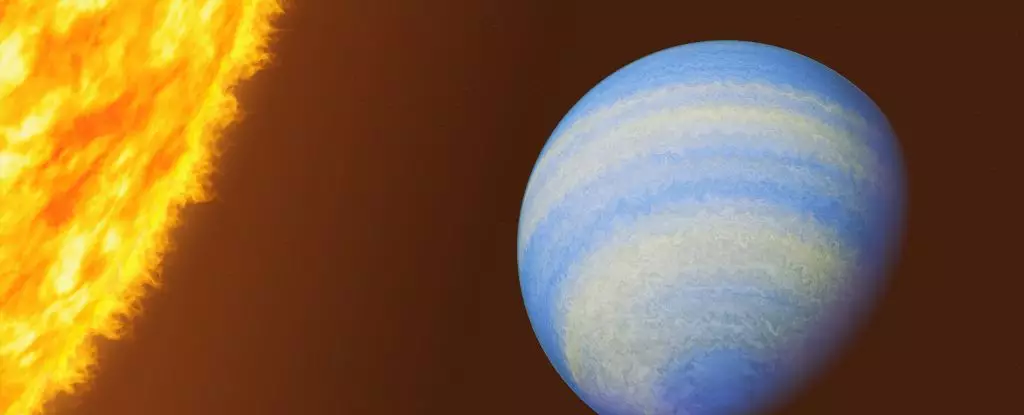Uranus, the seventh planet from the Sun, has hydrogen sulfide in its atmosphere, giving it a smell reminiscent of rotten eggs. Recently, astronomers have discovered the same foul-smelling gas on an extreme exoplanet known as HD-189733b. This Jupiter-sized exoplanet, located in the Milky Way, exhibits a signature of hydrogen sulfide, shedding light on the role sulfur plays in the atmospheres of planets beyond our Solar System.
With advancements in technology, astronomers can now detect exoplanets using methods such as the transit technique. When an exoplanet passes in front of its host star, the star’s light dims slightly. By analyzing the light filtering through the exoplanet’s atmosphere during this transit, scientists can identify the presence of specific molecules based on their absorption and emission lines in the spectrum of light. HD-189733b, a hot Jupiter discovered in 2005, is located relatively close to Earth and has been extensively studied due to its unique characteristics.
The James Webb Space Telescope (JWST) has provided researchers with detailed insights into the composition of HD-189733b’s atmosphere. In addition to hydrogen sulfide, water, carbon dioxide, and carbon monoxide have been identified as major constituents. The absence of methane, a molecule typically found in cooler gas giants, confirms the extreme heat of the exoplanet, which inhibits methane formation. Furthermore, the high metallicity of the exoplanet compared to its host star provides valuable clues about its formation process.
Studying hot Jupiters like HD-189733b can offer valuable information about planetary formation and evolution. The presence of sulfur on these exoplanets may indicate migration from outer regions closer to their host stars. By examining the chemical composition of hot Jupiters, scientists can gain insights into the conditions under which these massive planets were formed and migrated inwards.
Moving forward, researchers aim to investigate the presence of sulfur on other hot Jupiters to further understand the formation mechanisms of these exoplanets. The detection of hydrogen sulfide on HD-189733b opens up new avenues for exploring the composition and evolution of distant worlds. As scientists delve deeper into the mysteries of the universe, each discovery adds to our understanding of how planets, both within and beyond our Solar System, come to be.


Leave a Reply